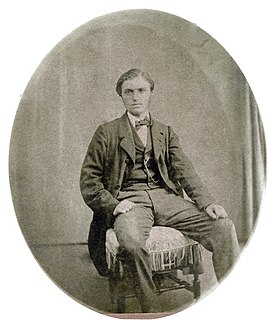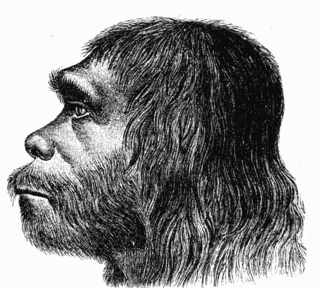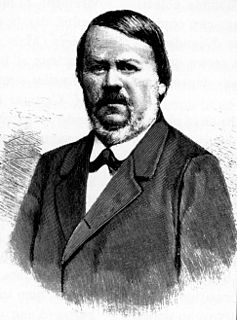
Prof. Dr. Johann Carl Fuhlrott (31 December 1803, Leinefelde, Germany – 17 October 1877, Wuppertal) was an early German paleoanthropologist. He is famous for recognizing the significance of the bones of Neanderthal 1, a Neanderthal specimen discovered by German laborers who were digging for limestone in Neander valley (Neanderthal in German) in August 1856. Originally disregarded, Fuhlrott, to his eternal credit, had the insight to recognize them for what they were: the remains of a previously unknown type of human. [1] His parents were the innkeeper Johannes Philipp Fuhlrott and his wife Maria Magdalena, née Nussbaum. His parents had died by the time he was ten and he was raised by his uncle, the Catholic priest Carl Bernhard Fuhlrott in Seulingen. In 1835 he married Josepha Amalia Kellner (1812–1850), with whom he had six children.

Wuppertal is a city in North Rhine-Westphalia, Germany, in and around the Wupper valley, east of Düsseldorf and south of the Ruhr. With a population of approximately 350,000, it is the largest city in the Bergisches Land. Wuppertal is known for its steep slopes, its woods and parks, and its suspension railway, the Wuppertal Schwebebahn. It is the greenest city of Germany, with two-thirds green space of the total municipal area. From any part of the city, it is only a ten-minute walk to one of the public parks or woodland paths.
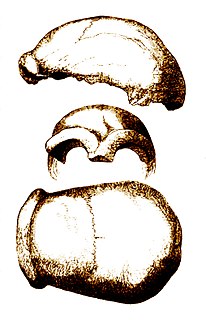
Feldhofer 1, Neanderthal 1 is the scientific name of the 40,000-year-old type specimen fossil of the species Homo neanderthalensis, found in August 1856 in a German cave, the Kleine Feldhofer Grotte in the Neandertal valley, 13 km (8.1 mi) east of Düsseldorf. In 1864 the fossil's description was first published in a scientific magazine and officially named.
Contents
After studying mathematics and natural sciences at the University of Bonn, Fuhlrott became a teacher at the Gymnasium in Elberfeld. In 1856, workers in a lime quarry in the nearby canyon called Gesteins or Neandertal (southwest of Mettmann) showed him bones they had found in a cave and thought to belong to a bear. Fuhlrott identified them as human and thought them to be very old. He recognized them to be different from the usual bones of humans and showed them to the Professor of Anatomy at the University of Bonn, Hermann Schaaffhausen. Together they announced the discovery publicly in 1857. In their view the bones represented the remnants of an ancient human race, different from contemporary humans. Their views were not readily accepted as it contradicted literal interpretations of the Bible, and Charles Darwin's work about evolution had not yet been published. Today, Fuhlrott and Schaaffhausen are considered to be the founders of paleoanthropology, and the taxon they discovered is referred to as Homo neanderthalensis in honor of the site where it was first identified.

The University of Bonn is a public research university located in Bonn, Germany. It was founded in its present form as the Rhein University on 18 October 1818 by Frederick William III, as the linear successor of the Kurkölnische Akademie Bonn which was founded in 1777. The University of Bonn offers a large number of undergraduate and graduate programs in a range of subjects and has 544 professors and 32,500 students. Its library holds more than five million volumes.

A gymnasium is a type of school with a strong emphasis on academic learning, and providing advanced secondary education in some parts of Europe comparable to British grammar schools, sixth form colleges and US preparatory high schools. In its current meaning, it usually refers to secondary schools focused on preparing students to enter a university for advanced academic study. Before the 20th century, the system of gymnasiums was a widespread feature of educational system throughout many countries of central, north, eastern, and south Europe.
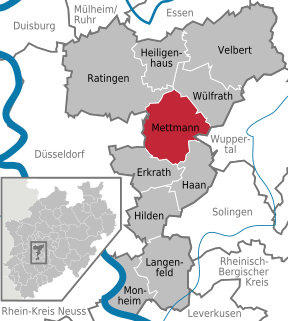
Mettmann is a town in the northern part of the Bergisches Land, in North Rhine-Westphalia, Germany. It is the administrative centre of the district of Mettmann, Germany's most densely populated rural district. The town lies east of Düsseldorf and west of Wuppertal.

